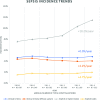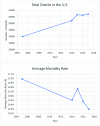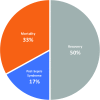Post-sepsis syndrome - an evolving entity that afflicts survivors of sepsis
- PMID: 31892321
- PMCID: PMC6938630
- DOI: 10.1186/s10020-019-0132-z
Post-sepsis syndrome - an evolving entity that afflicts survivors of sepsis
Abstract
Background: The sequelae of sepsis were once thought to be independent of sepsis itself and assumed to be either comorbid to sick patients or complications of critical illness. Recent studies have reported consistent patterns of functional disabilities in sepsis survivors that can last from months to years after symptoms of active sepsis had resolved. BODY: Post-sepsis syndrome is an emerging pathological entity that has garnered significant interest amongst clinicians and researchers over the last two decades. It is marked by a significantly increased risk of death and a poor health-related quality of life associated with a constellation of long-term effects that persist following the patient's bout with sepsis. These include neurocognitive impairment, functional disability, psychological deficits, and worsening medical conditions.
Conclusion: This "post-sepsis syndrome" has been the subject of active preclinical and clinical research providing new mechanistic insights and approaches linked to survivor well-being. Here we review important aspects of these research efforts and goals of care for patients who survive sepsis.
Keywords: HMGB1; Post-sepsis syndrome; Sepsis sequelae; Sepsis survivors.
Conflict of interest statement
The authors declare that they have no competing interests as defined by
As per the publisher-level peer review policy (“All submissions to BMC journals are assessed by an Editor, who will decide whether they are suitable for peer review. Where an Editor is on the author list or has any other competing interest regarding a specific manuscript, another member of the Editorial Board will be assigned to assume responsibility for overseeing peer review.”), Dr. Pavlov did not participate in the peer review for this manuscript.
Figures





References
Publication types
MeSH terms
Grants and funding
LinkOut - more resources
Full Text Sources
Other Literature Sources
Medical

